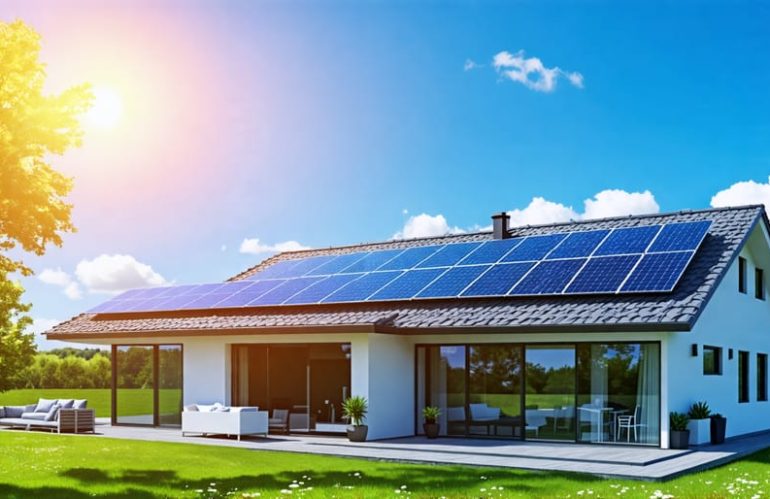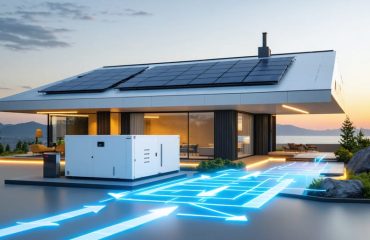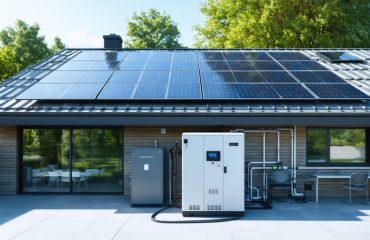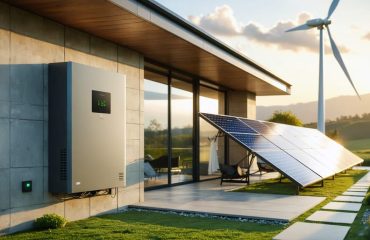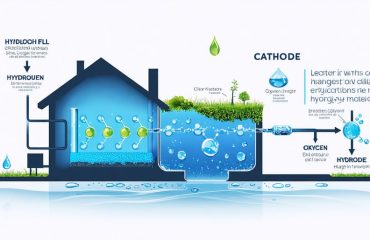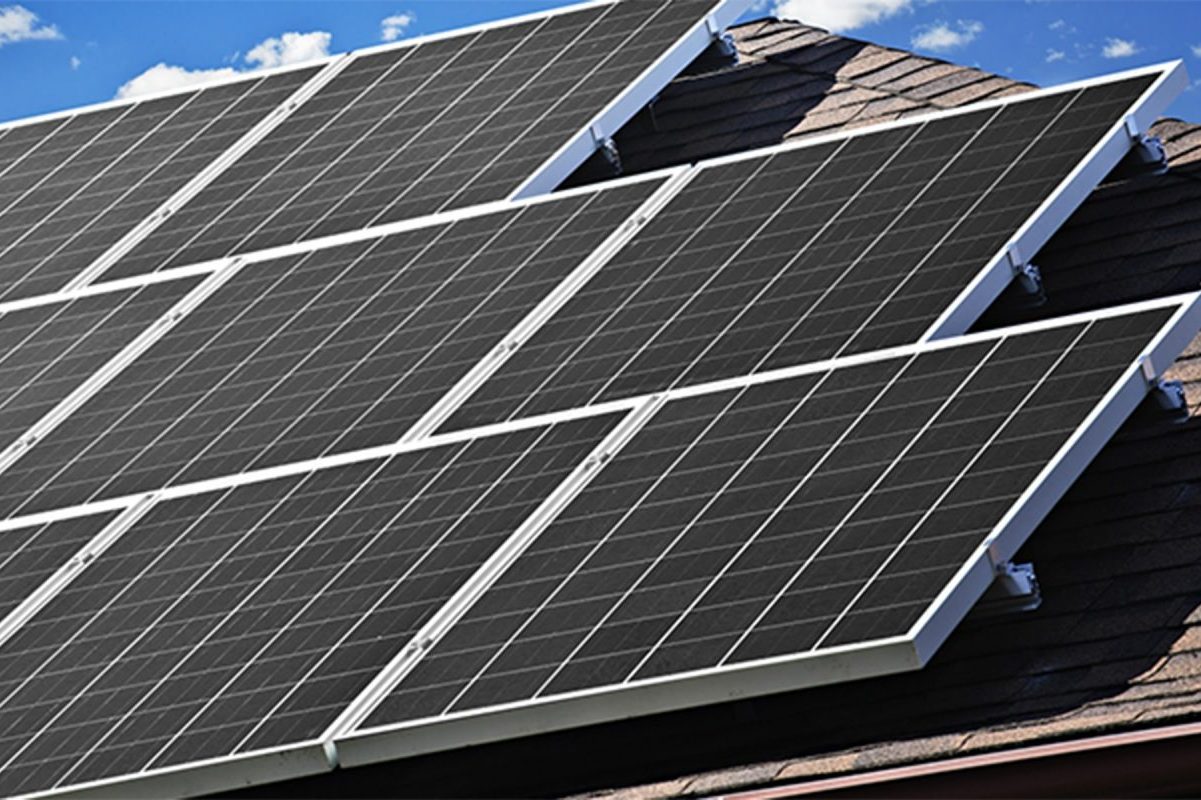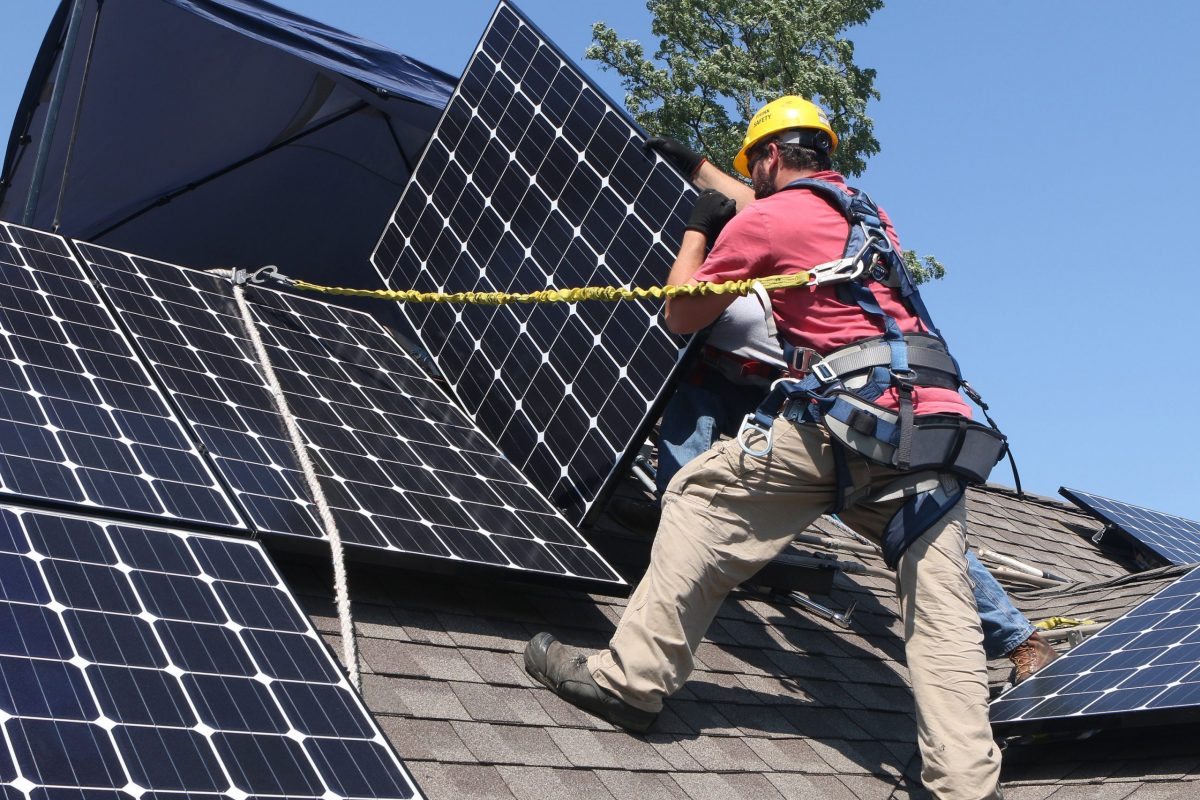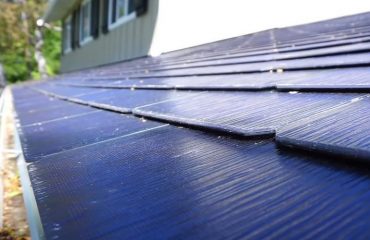Switch to independent solar panels to cut energy costs and embrace sustainability. Assess your home’s energy needs by analyzing past utility bills to determine the appropriate solar panel size. Consult with a certified solar installer to ensure optimal placement and installation, avoiding shaded areas to maximize efficiency. Take advantage of federal and state incentives to offset installation costs, exploring tax credits and rebates. Familiarize yourself with common misconceptions, such as panels not working on cloudy days; modern systems often generate power even under indirect sunlight. Embrace energy independence and environmental responsibility by integrating independent solar panels into your home.
Understanding Independent Solar Panels
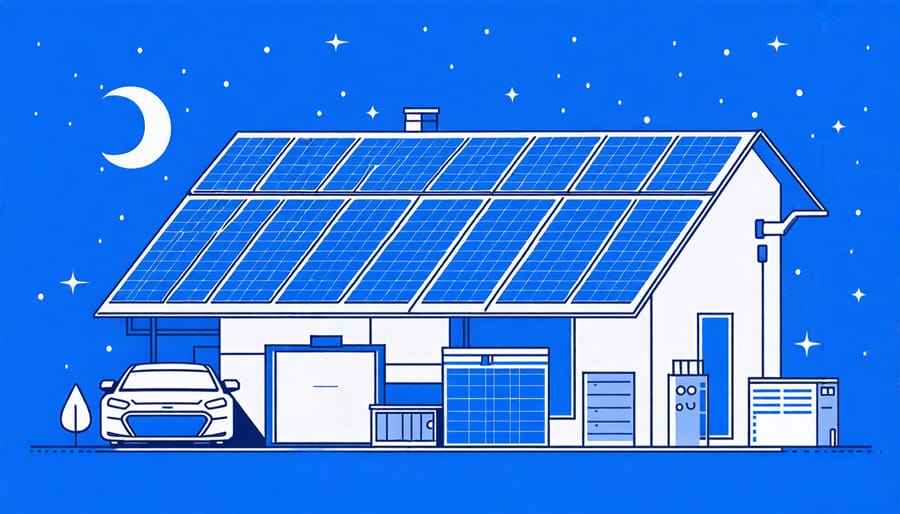
How Do Independent Solar Panels Work?
Independent solar panels, also known as off-grid solar systems, operate by capturing sunlight and converting it into electricity for immediate use or storage. These panels work similarly to traditional solar systems but are designed to function independently, without reliance on the main power grid. At their core, solar panels comprise photovoltaic (PV) cells that absorb sunlight and generate direct current (DC) electricity. This electricity is then converted into alternating current (AC), the type of electricity most household appliances use, by an inverter.
What makes independent solar panels stand out is their ability to store excess energy in batteries. This reserve ensures that you have access to power even when the sun isn’t shining, such as during nighttime or on cloudy days. By utilizing this stored energy, homeowners can reduce their electricity bills and contribute to sustainable living. A common myth is that independent solar systems are less reliable, but advances in battery technology have made them a viable and resilient option.
Comparing Independent and Grid-Tied Solar Panels
Independent solar panels, often called off-grid systems, are designed to function autonomously from the main power supply, offering full energy independence. This setup is particularly advantageous for homeowners in remote areas or those keen on sustainable living. By contrast, grid-tied solar systems are integrated with the local electrical grid, allowing surplus energy to be fed back, potentially lowering electricity costs. Both systems offer distinct benefits: independent systems provide reliability in power outages and complete freedom from energy bills, while grid-tied setups often have lower upfront costs and allow users to benefit from incentives, like net metering, which credits them for excess energy produced.
Choosing between the two depends on your lifestyle and energy needs. If continuous, reliable power is your goal, especially in areas prone to outages, independent systems shine. However, if you’re looking to lower your energy costs without a hefty initial investment, a grid-tied system may be more practical. Both paths lead to greener energy use, but understanding the differences ensures the choice aligns with personal financial and environmental goals.
Benefits of Using Independent Solar Panels
Personal Financial Benefits
Independent solar panels offer an exciting pathway to significantly reduce your monthly energy bills while gaining greater financial autonomy. By harnessing the power of the sun, homeowners can generate their own electricity, decreasing reliance on traditional power grids and insulating themselves from rising utility costs. Imagine the satisfaction of watching your electricity meter run backward during the sunniest parts of the day. This shift not only leads to immediate savings but also contributes to long-term financial stability, allowing you to allocate funds elsewhere.
Moreover, the trend of increasing energy costs contrasts with the decreasing costs of solar technology, further enhancing the attractiveness of solar investments. Installing independent solar panels can also increase the value of your property, appealing to future buyers who prioritize energy efficiency and sustainability. Financial independence is no longer just a dream; with independent solar panels, it’s an achievable reality, ensuring you not only save money but also contribute positively to the environment.
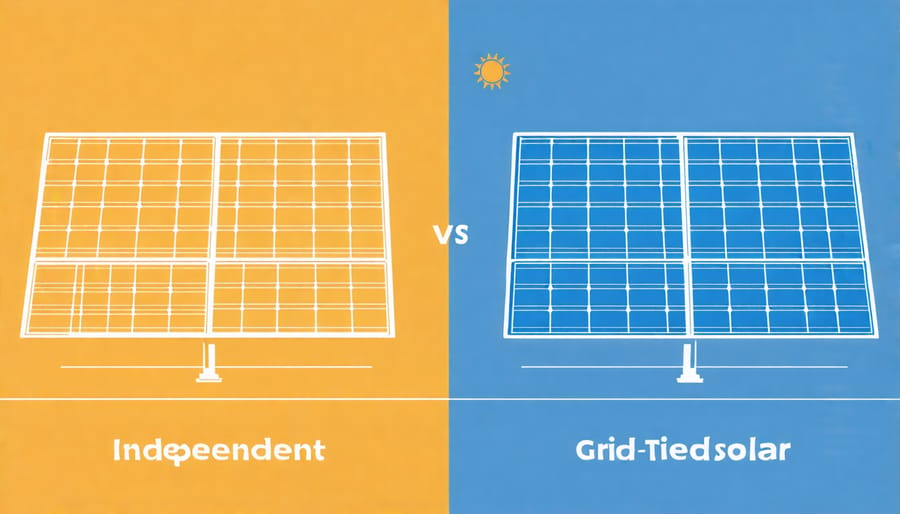
Environmental Impact
Using independent solar panels significantly contributes to a positive environmental impact. By harnessing energy directly from the sun, they reduce reliance on nonrenewable resources, diminishing harmful emissions and aiding in the fight against climate change. This shift to solar energy translates into cleaner air, as it means fewer pollutants from fossil fuel combustion, benefitting both the planet and public health.
Moreover, independent solar panels empower homeowners to generate their own electricity, minimizing the demand on traditional power grids. This decentralization is instrumental in lowering transmission losses and optimizing energy use. Independent systems also support biodiversity by posing a minimal disruption to the environment compared to conventional energy sources.
In addition to these environmental benefits, adopting solar technology can significantly lower energy bills over time. By investing in solar panels, homeowners not only contribute to a sustainable future but also achieve financial savings, debunking the myth that eco-friendly practices are costly. This makes solar energy an attractive option for anyone committed to sustainable living.
Dispelling Myths About Independent Solar Panels
Myth: Solar Panels Are Too Expensive
Many homeowners worry that installing independent solar panels might be too costly, but the truth is that prices have decreased substantially over the years. In fact, the initial solar panel costs can often be offset by financial incentives and tax credits. Consider programs like the federal investment tax credit (ITC), which can reduce the upfront expense significantly. Over time, the savings on energy bills become evident, making solar a worthwhile investment. Moreover, some states offer additional rebates and benefits that further lower the cost. The long-term savings combined with these incentives can make solar panels more affordable than you might think. Plus, with the ability to disconnect from traditional energy sources, homeowners gain control over their energy independence, embracing a sustainable future without breaking the bank.
Myth: Solar Panels Are Ineffective in Cloudy Areas
Modern solar panels are far more efficient than many people realize, especially when it comes to generating energy in less sunny climates. While it might seem logical to think solar panels only work well in sunny areas, the truth is current solar technology can effectively harness the sun’s energy even on cloudy or overcast days. Advances in photovoltaic cells have greatly improved their ability to capture various light spectrums, meaning your solar panels can continue to generate electricity in diffused sunlight. For homeowners, this means consistent energy savings and reduced utility bills, regardless of local weather patterns. Plus, these improvements in efficiency make installing solar panels a viable option for a wider range of geographical locations, allowing more households to enjoy the benefits of renewable energy and embrace sustainable living.
Steps to Install Independent Solar Panels at Your Home
Thinking of going green and cutting down on energy bills? Installing independent solar panels at home might be the solution you’re looking for. This process can be simpler than you think, especially when partnering with professionals who can guide you every step of the way. To start, it’s crucial to evaluate your home’s solar potential by checking the amount of sunlight your roof receives daily. This step can be facilitated by specialized tools and apps or through a professional assessment.
Once you’ve established solar feasibility, it’s time to choose the right solar panel system. There are many types available, each varying in efficiency and cost. Although it may be tempting to make this decision on your own, consulting with a solar installation expert ensures you select a system that’s perfectly tailored to your home’s energy needs.
After selecting your solar panels, the next step is to navigate any necessary local permits. Your chosen solar professional can assist with this often intricate process, ensuring compliance with zoning laws and building regulations. Following permit approval, the actual installation is typically swift, taking just a few days. If you’d like more detailed guidance, you can learn more about how to Install solar panels effectively and safely by consulting reliable resources.
Finally, don’t forget to set up a monitoring system to track the energy your panels produce. With these panels in place, enjoy the long-term financial savings and the environmental benefits of using clean, renewable energy. Transitioning to solar is a significant yet rewarding step towards sustainable living.
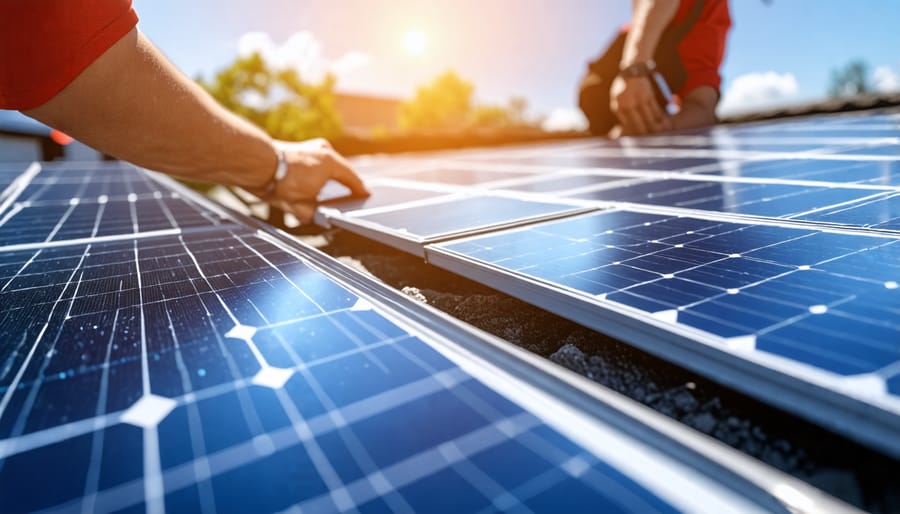
Conclusion
Independent solar panels offer homeowners a wealth of benefits that make them a wise investment for those seeking a sustainable lifestyle. They provide an eco-friendly solution that not only reduces carbon footprints but also significantly cuts down on energy bills. By harnessing the power of the sun, homeowners can enjoy a reliable and renewable source of energy that decreases dependency on traditional electricity supplies. This not only leads to personal financial savings but also enhances energy security. Furthermore, independent solar panels are more efficient and adaptable than ever, debunking myths about their performance in cloudy or cold climates. Adopting solar power can increase property value, making it an attractive option for future resale benefits. With a straightforward installation process and decreasing costs, transitioning to solar is more accessible than many people realize, paving the way for a cleaner and more sustainable future.

